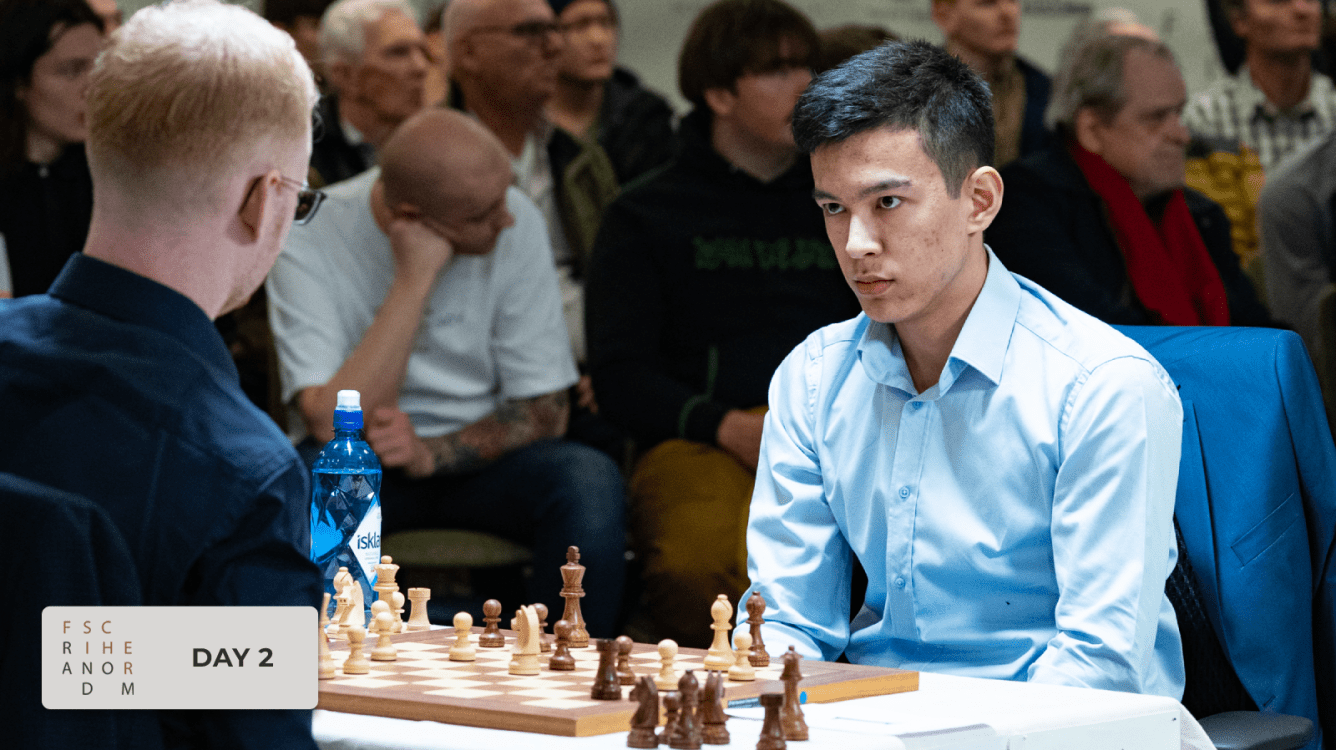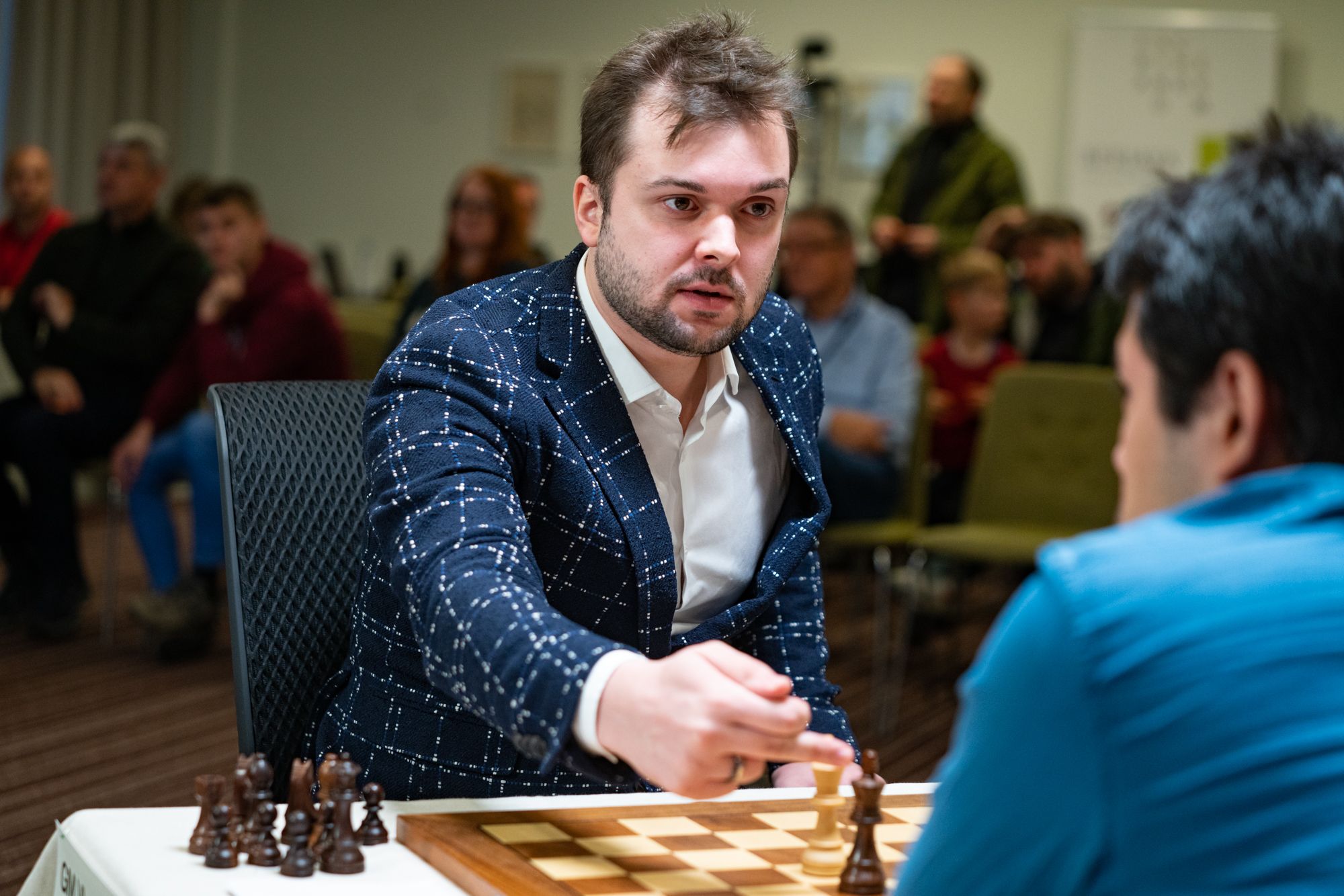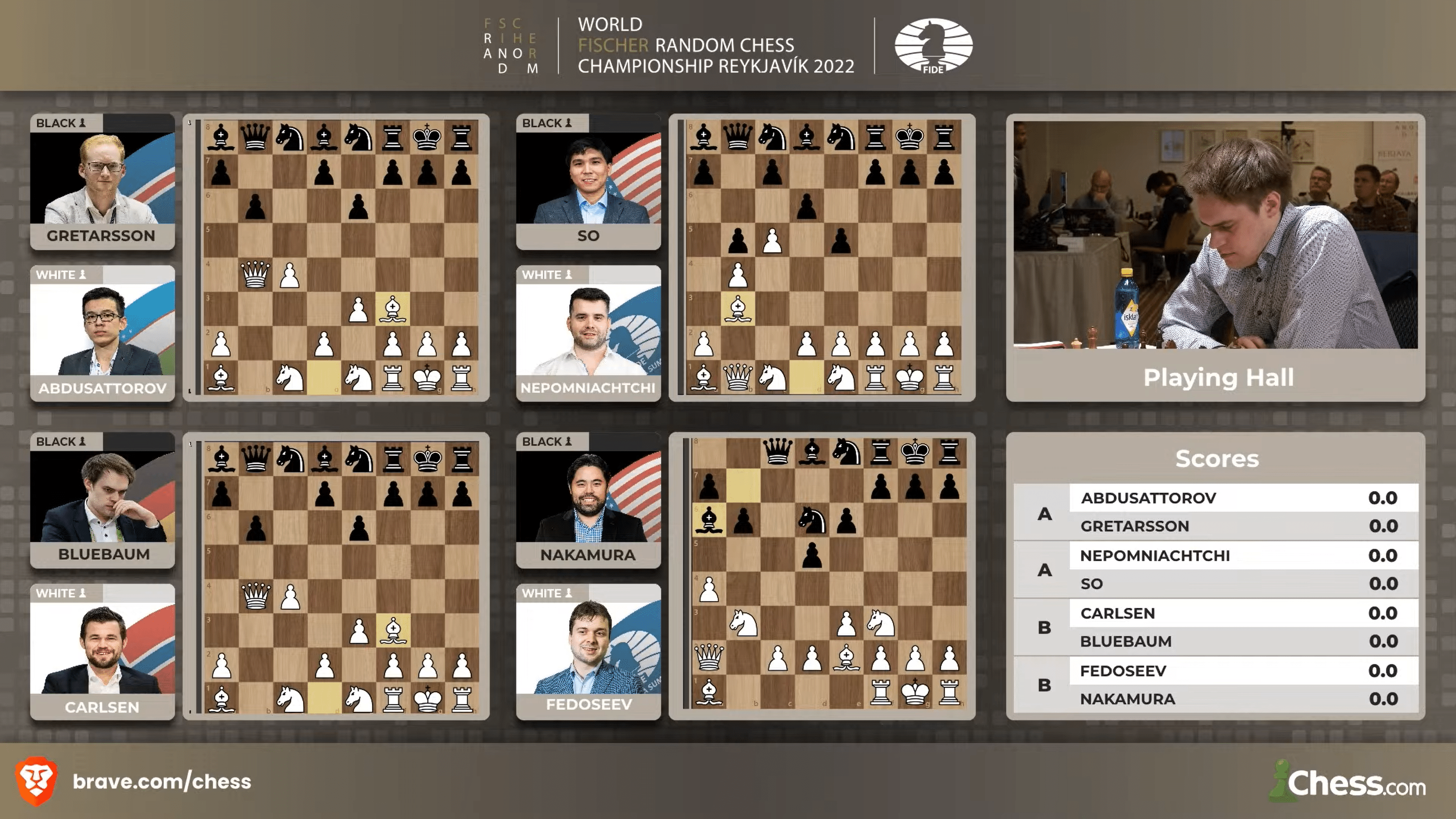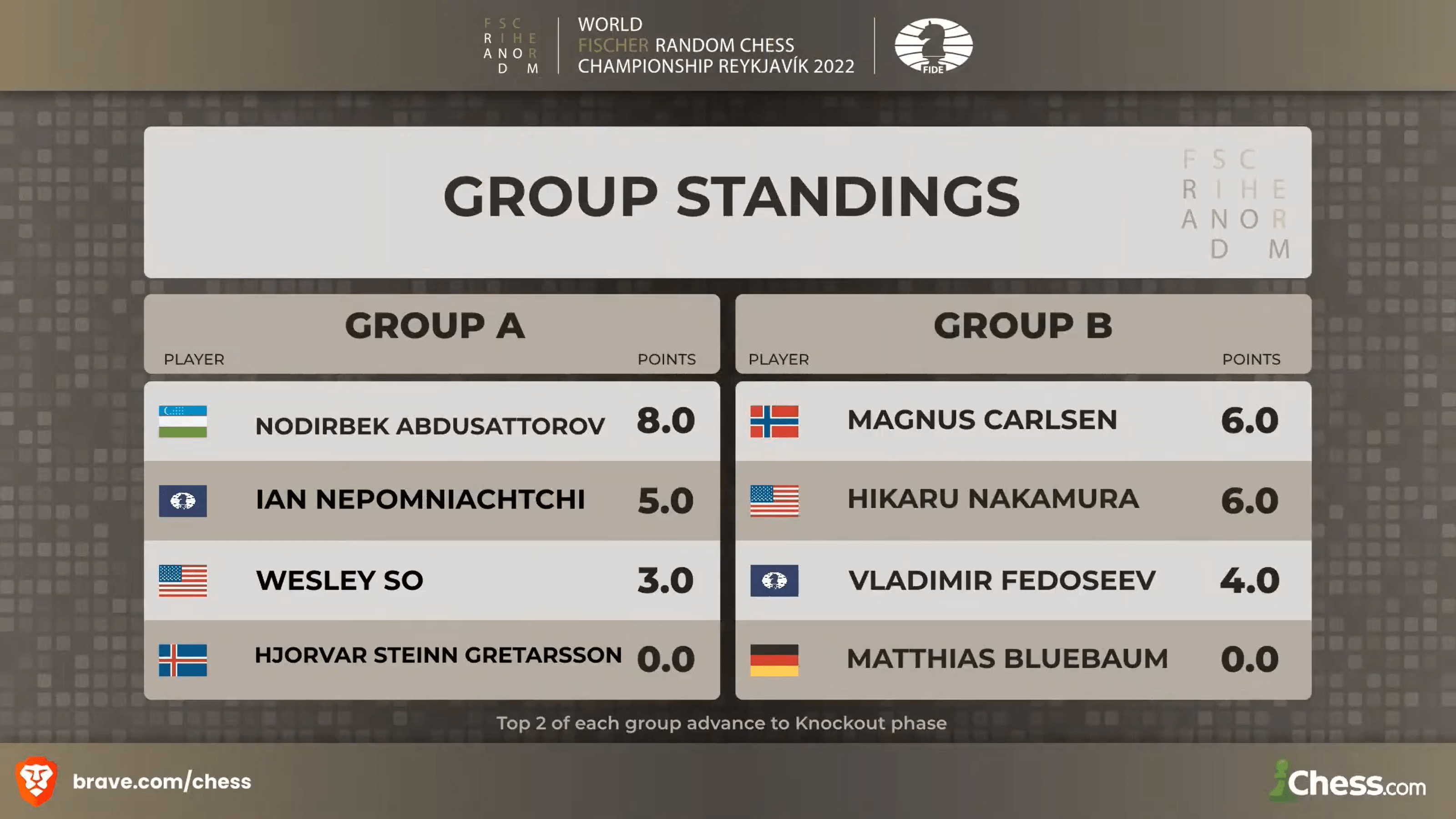
Opening Theory in Fischer Random?! Abdusattorov Leads, Carlsen Catches Nakamura
GM Nodirbek Abdusattorov swept both matches vs. GM Hjorvar Gretarsson to increase his lead in group A of the 2022 Fischer Random World Championship on Wednesday. GM Magnus Carlsen also won two matches to join GM Hikaru Nakamura―who was held to tied matches vs. GM Vladimir Fedoseev―in the lead in group B.
The final day of the group stage, including a much-anticipated Nakamura vs. Carlsen rematch, takes place on Thursday, October 27, starting at 8 a.m. PT / 17:00 CEST.
You can watch the 2022 Fischer Random World Championship on Chess.com/TV. You can also enjoy the show on our Twitch channel and catch all our live broadcasts on YouTube.com/ChesscomLive. Games from the event can be viewed on our events page.
The live broadcast hosted by GM Arturs Neiksans and IM Lawrence Trent.
Unlike the previous day, the starting position varied more from regular chess with only one piece on the usual square: the f-bishop.
Let's take a look at the major features:
- Each side has an undefended pawn on the a-file.
- The king and d-rook start in a queenside castled position: Will the players opt to save time and leave these where they are?
- The bishops begin near the center, meaning they aim at the edges.
- The computer evaluation is +0.19
There are two major approaches to Fischer Random openings:
A) Steer the position to as close to a regular chess position as quickly as possible, placing your pawns in the center and focusing on the typical opening principles.
B) Use the unique features of the position to put early pressure on your opponent, focusing on opening diagonals for your bishops and unconventional development to launch attacks on on unexpected weak points.
In Fedoseev vs. Nakamura, our Game of the Day, we see these two approaches face off against each other with Fedoseev trying to steer the game to normal seas while Nakamura worked to unbalance the game and create unusual counterplay.

GM Ian Nepomniachtchi opted for a bishop-focused response to GM Wesley So's choice to open the center with 1...d5, leading to a dynamic clash.
Nepomniachtchi and So tied the first match, each winning one game. Nepomniachtchi swept the second match to reach second in group A, heading into the last day of this stage.

The round four initial position also had only piece on the typical square: the h-rook.
What else do we notice about this setup?
- The d-pawn is undefended.
- The king and f-rook start in a kingside castled setup. This seems useful expect that it leaves the h-rook buried in the corner with little access to the center. Will players push their h-pawns to activate it, even though this opens the kingside?
- One bishop begins in the corner, ready to aim through the center down one of the long diagonals as soon as the b-pawn advances.
- The other bishop starts in the center and will likely take longer to influence the game.
- The computer evaluation is +0.25, the first position of the group stage to be slightly more unbalanced than the regular setup.
Is Fischer Random opening theory beginning to develop? Five moves into the game Carlsen and Abdusattorov had the exact same position playing White.

There's a consistent logic behind the way that Carlsen and Abdusattorov set up their pieces: prioritizing long diagonals for their bishops and queens. Despite a picturesque opening position, both players found themselves with challenging positions in the middlegame. Abdusattorov managed to fight back for the win in a tactical slugfest vs. Gretarsson.
Winning all of his matches so far, Abdusattorov has reached an optimum score of eight points (two points per match win) with two rounds to go.
Carlsen's middlegame from the same position was characterized by a curious longterm rook maneuver where the h-rook sat on h5 for 16 moves before swinging to the queenside to win a weak pawn. Despite having a challenging position, Carlsen fought back vs. Bluebaum, holding a draw in the double knight ending down a pawn.
Carlsen's two match victories vs. Bluebaum helped him bounce back from his loss to Nakamura the previous day, tying for first with his rival. The two are set to face each other again in the final round.
Nakamura and Fedoseev tied both matches, drawing every game, but with no lack of fighting spirit and exciting play. So many of their games were close to decisive, including their fourth one of the day where Nakamura fought shot Rxf5!, yet Fedoseev bounced back and held the game anyway.
Group Stage Day 2 Standings

The Fischer Random World Championship, brought to you by the Government of Iceland and the City of Reykjavik, gathers top players worldwide to compete in a series of classical Fischer Random games for their share of the $400,000 prize fund and the title of FIDE Fischer Random World Champion. Fischer Random (also known as Chess960) is a chess variant where all standard chess rules are the same, except for the starting position of the pieces, which can be in one of 960 semi-random setups. Heavily endorsed by the 11th world champion GM Bobby Fischer, the variant sidesteps opening preparation to highlight players' true understanding of chess.
Previous coverage
- The Winding Wonderland of Fischer Random: Abdusattorov, Nakamura Lead
- Opening Understanding vs. Counterstrike Ability: Bluebaum Defeats Navara
- Quadruple Queens And Raining Rooks: Bluebaum, Navara Advance To Final
- IM Pranav Overtakes GMs in Second Fischer Random Swiss
- Fedoseev Triumphs In An 'Absolutely Different World'
- Hansen Dances to 4-0, Fedoseev Fights to Final
- Sevian Refuses Last-Round Draw Offer, Wins Fischer Random Swiss
- Announcing The 2022 FIDE Fischer Random World Chess Championship



